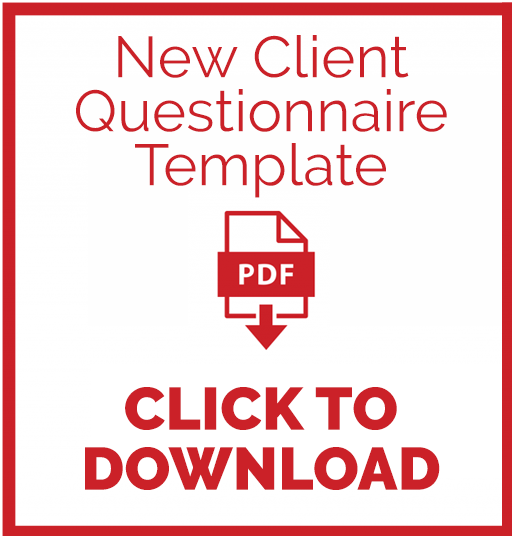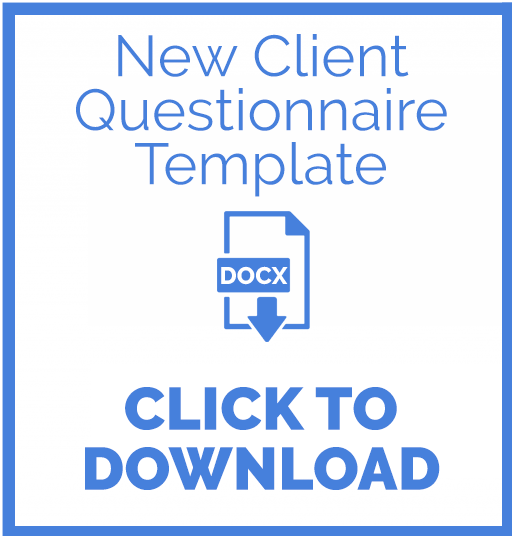
Winning a new client is one of the most fulfilling experiences for business development teams and agency founders. When a new client awards you with their business, they're placing a huge amount of trust in your ability to deliver the services needed to grow their business.

After the initial celebration, it's time to get started and in most client/agency relationships, this almost always starts with an onboarding (or kick-off) meeting. Whether held in-person or online, an onboarding meeting is designed to transfer as much information between client/agency to help inform the upcoming work.
Why Do You Need a Client Questionnaire?
During onboarding, a client questionnaire is probably one of the most efficient and effective ways to extract information from the client. Aside from the obvious aspects of learning more about the client's business and their goals, a client onboarding questionnaire can help set the project up for success from day 1.
Ryan Jones, SEO Director at Razorfish says:
"A client questionnaire is a must for ensuring that no time or resources are wasted when kicking off a new project. It’s important to understand what’s already been done and how success will be measured so that you don’t end up telling a client what they already know or strategizing toward goals that aren’t really important."
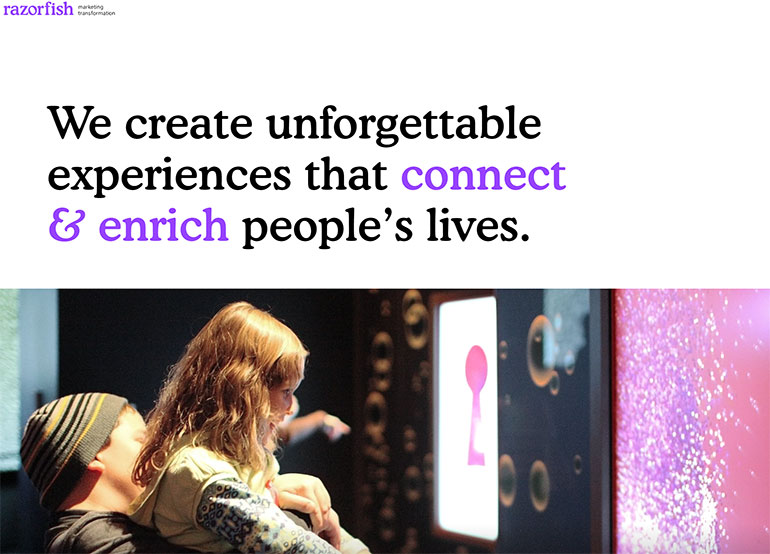
Unless the job is very small, you should plan to deliver the questionnaire in a meeting format to facilitate as much conversation as possible. Sending questions ahead of the meeting should only be done if you know the questions are likely to be complex and if the client might need time to prepare or source answers.
The overall purpose of your client questionnaire may be a combination of some of these factors or perhaps all of them:
-
-
- Perform a formalized 'welcome' meeting and provide the opportunity for team members from both sides to meet each other
- Be a precursor to an even more formalized client induction whereby the agency team deep-dive into the client's business/operations
- Opportunity to ask in-depth questions about the project to ensure alignment / desired outcomes
- Determine 'ways of working' (eg: communication channels, ongoing meetings / WIPs, roles & responsibilities, etc)
- Set expectations and avoid scope creep
-
How to Think About Your Questionnaire Design
A new client questionnaire is not as simple as writing a few questions down. A bit of effort and advance preparation will help you craft intelligent questions that are effective at extracting information to help you and your team exceed the clients' expectations. Remember, onboarding meetings aren't just administrative, they are really important for setting up good project governance and showcasing your expertise.
Here are a few pointers to consider when crafting your new client questionnaire:
Client Perception
You've already benefited from a winning first impression during a pitch or new business meeting. Now that you've won the client, the relationship is about to evolve. So be extra mindful of how your new client perceives this first meeting. You need to strike a balance between uncovering new information whilst still showcasing your expertise. You don't want to come across asking 'dumb questions' or anything that you should already know. Be on the front foot by reiterating things you already know about what the client wants to achieve and ask deeper questions to tease out new details.
Closed-Ended vs Open-Ended Questions
Closed-ended questions can be answered with yes or no or they have a limited set of possible answers. Open-ended questions are questions that allow someone to give a free-form answer.
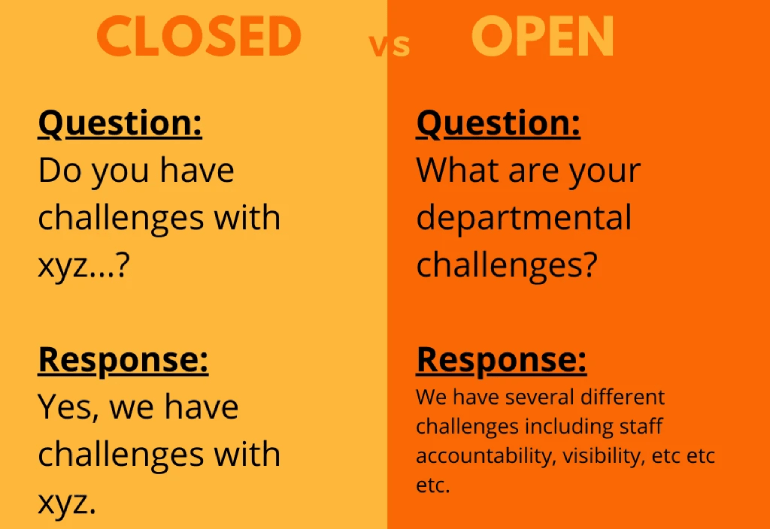
Although this concept is usually used for quantitative questionnaires (ie: questionnaires designed to be answered by many people), you should still consider the use of closed vs open questions in qualitative questionnaires (ie: questionnaires designed to be answered by one person or a small number of people).
Gaurav Sharma, CEO of digital marketing consultancy Attrock says it comes down to the level of detail you need in your responses:
“Closed-ended questions can be used to simplify the onboarding process with new clients however when detailed answers are needed you'll need to turn to open-ended questions.”
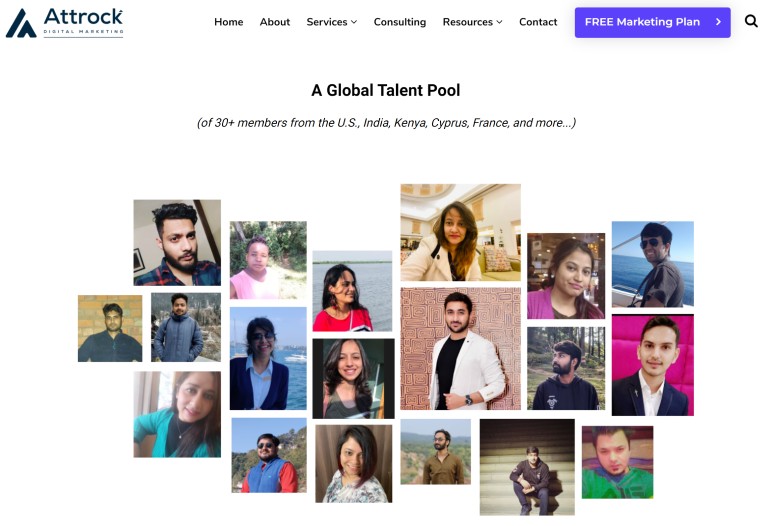
Indeed, open-ended questions help facilitate more detailed responses. For example, let's imagine your agency is onboarding a new client - a homewares retailer with bricks and mortar shops plus they sell products online. You know their overall objective is to increase traffic to their website. But you also know they've flagged other objectives like increasing e-commerce revenue AND increasing footfall in-store. An example of a closed-ended question might be: "which is more important: e-commerce revenue or increasing footfall?". But it's very likely that both are important so, asking this question in an open-ended way will provide a much more detailed answer: "tell me about how these two objectives drive value for your business".
Run a Simulation
If you're unsure about your questionnaire, run a simulation of the onboarding meeting with someone from your team who can play the role of the client. Sometimes, just talking things through in person can help identify issues in the question flow or potentially difficult questions to answer. You could even play the role of the client yourself. Nothing builds client empathy like putting yourself in their shoes!
Presentation Style
Pay close attention to each and every answer. In a discussion, note where the client struggles to think of the answer or if any questions make them uncomfortable or behave differently. Sometimes it's useful to have someone from the agency in the meeting whose job it is to specifically take detailed notes. Alternatively, you can use meeting transcription apps like the in-built Recorder apps on iOS and Android to record and provide full transcripts of the onboarding meeting. Just make sure you let the client know and highlight the usefulness of having a meeting transcript.
Some agencies like Windhill Design (who specialize in local SEO) publish their client onboarding questionnaire on their website which is a nice idea for working with remote clients or smaller jobs.
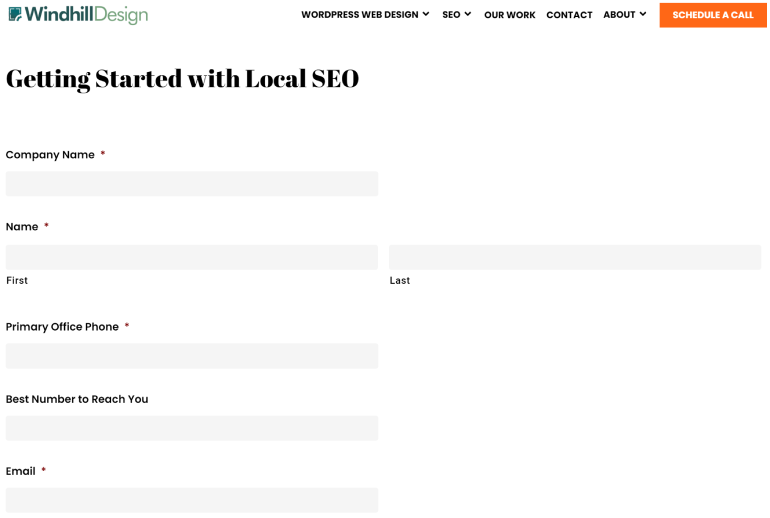
Canadian digital agency Prolex Media use a range of client questionnaires depending on the type of work they are undertaking. They were nice enough to share their full client questionnaire template in PDF. It contains general business questions up front and then is split into questions relevant for each service area they provide.
Multiple Stakeholders, Competing Interests
Be careful of a scenario where you have multiple stakeholders on the client's side that may not see eye-to-eye on project priorities. Firstly, it's really important to call this out if you identify it. Secondly, it shouldn't be a negative thing. People disagree all the time. So after you've acknowledged that there are different priorities in play, you can craft different strategies to achieve all priorities. This will keep all stakholders happy and showcase your expertise in managing competing interests.
What to Include in a Client Questionnaire?
SEOptimer is used by over 2,000 digital agencies around the world. So we decided to ask some agencies about what they ask new clients during their onboarding sessions.
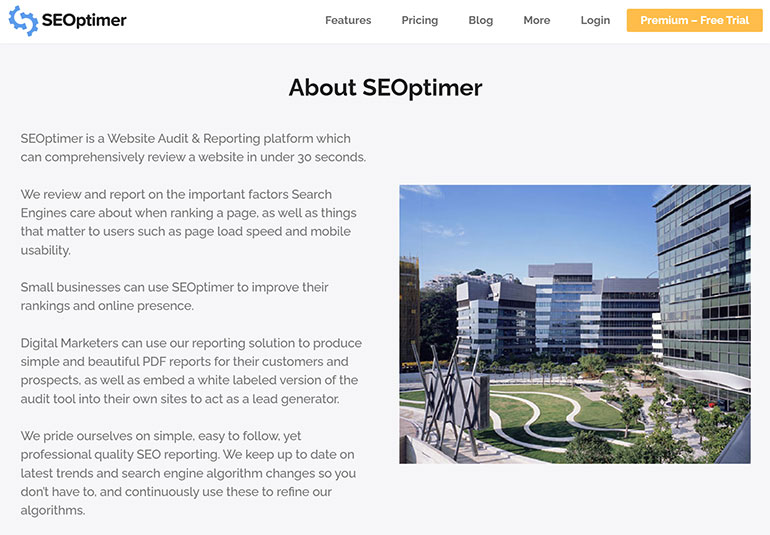
There's obviously a number of predictable questions to include in a client questionnaire, especially questions related to the project, existing assets and the client's business. We've included these questions in the downloadable template at the bottom of this guide. But in this section we want to highlight a few of the more thought-provoking questions and ones that may be less obvious to ask.
1. Business Goals, Not Marketing Goals
This is probably the most important question to ask your new client. Although asking them about their business goals and objectives may seem obvious - be prepared to quiz them further as they may instinctively jump straight to marketing goals (eg: engagements, traffic, etc). If they do this, you need to bring them back to talking about overall business goals (eg: sales figures, conversion rate, etc).
Lynne McNamee, President of Lone Armadillo Marketing & Consulting says:
"You need to make sure the client has a clear understanding of what the business goals are (not the marketing goals) and that the client can communicate those goals as this will be critical to a successful relationship."
Daniel Ndukwu, Co-Founder of GetSolitaire further adds:
"Marketing is designed to support business goals. A client may say that they want to grow their Facebook presence but when you dig into the weeds to find out the business goal you realize that they really want to promote a specific product they believe may do well on Facebook."
If the client can see your focus is on their business fundamentals (as opposed to marketing metrics), you're more likely to build high levels of trust and value.
2. Content Production Capacity
Oli Baise, Founder of digital PR agency Oli Baise Digital says he ideally wants to work with clients who can commit to at least 10 hours per week of generating expert content or helping to promote content on social media.
"Content created by genuine industry experts simply cannot be recreated by agencies, and tends to perform much better than typical agency content. This is especially true if a client wants to build a personal brand or be seen as an expert in their industry (as ours tend to do)."
Further to this Oli asks:
- Whether they have any unique data or data sources that can be used to enrich content
- Whether they are available at short notice to provide quotes for journalists and industry writers
- Whether they can write articles and if so, at what rate
- Whether they can make themselves available for video interviews or podcasts
Even if content production isn't relevant to your project, think about the level of involvement you expect from your client and their capacity to deliver assets that you'll need to fulfill your services. This question is really important as it helps you to understand your client's resources and what you can expect from them over time.
3. Previous Experience with Digital Agencies
Mladen Maksic, CEO at digital agency Play Media asks new clients about their experiences with previous agencies.
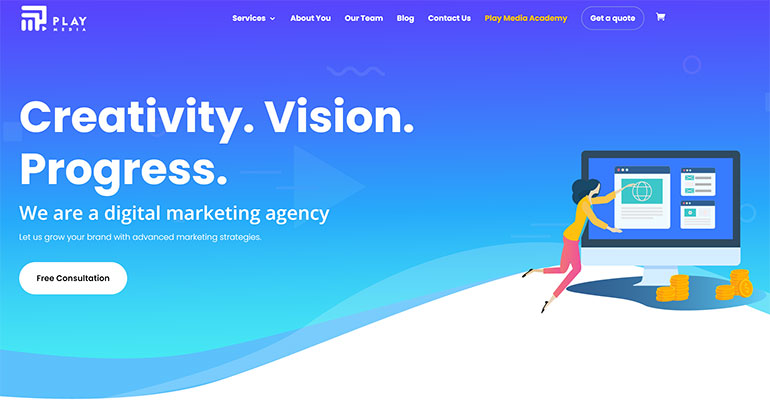
They ask questions regarding what their expectations were, whether the previous agency delivered or not, and why they decided to end the partnership.
"Questions such as these reveal a lot about your new client. The purpose of learning more about their previous dealings is not just to deliver a better service - it's also to see what the clients' limits are, how they communicate, and what they don't tolerate."
You may be surprised by what your new client likes and dislikes when working with agency partners. After all, it's better to know upfront than finding out later on!
4. Ask Why the Agency was Chosen
Emma Williams, Digital Marketing Manager at digital agency Edge of the Web asks new clients what made them choose their agency over the others.
"This is a great conversation starter, and a chance for you to get an idea of what differentiates your agency from the rest and what your new client expects you to deliver for them."
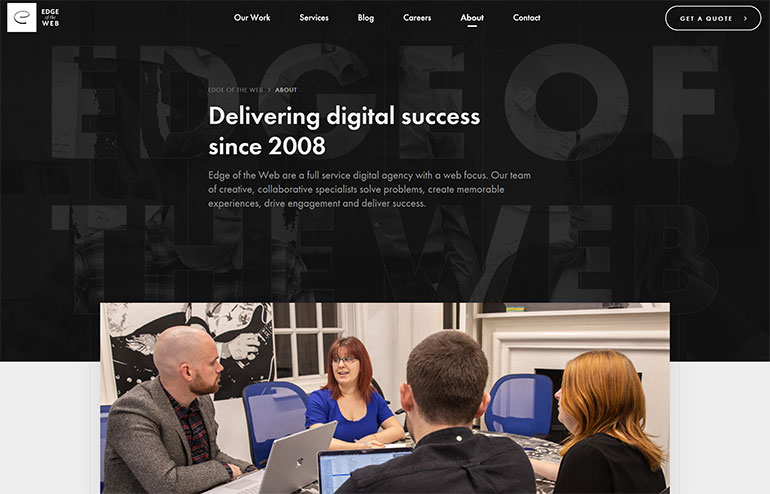
There's nothing like getting a bit of competitive intelligence from your new client about the other agencies they spoke to and what their strengths and weaknesses were. The more you can understand about how your agency is perceived in the client's eyes, the more you can optimize for future new business and how to position your agency competitively.
5. Ask About Long Term Plans
Kris Grey, Founder of Friendly Bowler asks new clients where they see their business in 1, 5 & 10 years. This helps inform and tailor a marketing strategy that fits the client's longer term plans.
"If the client has plans to exit in a year or in 5 years, we may build the strategy differently than someone who plans to be around for longer. This has a lot to do with how a business needs to present its balance sheet and profit and loss statements to potential buyers versus meeting an owner's expectations for annual income."

Asking in-depth questions like these also elevates your agency from service provider to trusted partner that truly cares about them and their business.
6. Be Mindful of Time
Dinesh Agarwal, CEO of RecurPost says it's about striking a fine balance between extracting as much useful information as possible from a new client while not exhausting them with too many in-depth questions or questions they will struggle to answer.
"To increase the likelihood of receiving useful answers, avoid including questions that require the respondent to put too much time into providing an answer or questions that the client can't answer on their own."
You may have the opportunity to spread your client onboarding meeting across multiple sessions, or different days. This can be useful for taking stock of what you learnt during the first session and how you can potentially use the second session to fill more information gaps.
Download the New Client Questionnaire Template
We've put together a new client questionnaire template which covers a lot of the types of questions you'll need to ask during client onboarding. Think of this template as both a starting point and a menu. It's a starting point because there'll be more specific questions relevant to your client/project that you'll need to add. And it's a menu because some of these questions will either be irrelevant or you'll already know the answer so you'll need to pick and choose and edit the questionnaire accordingly.
We've also created a Google Docs version. If you prefer this version, make sure to select File -> 'Make a copy' to save a new editable version to your Google Drive.
